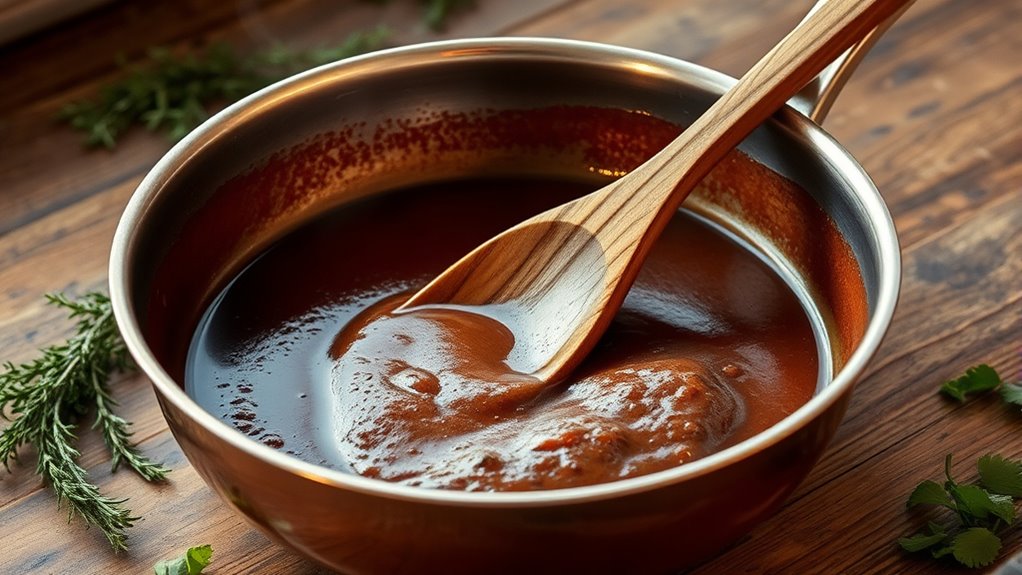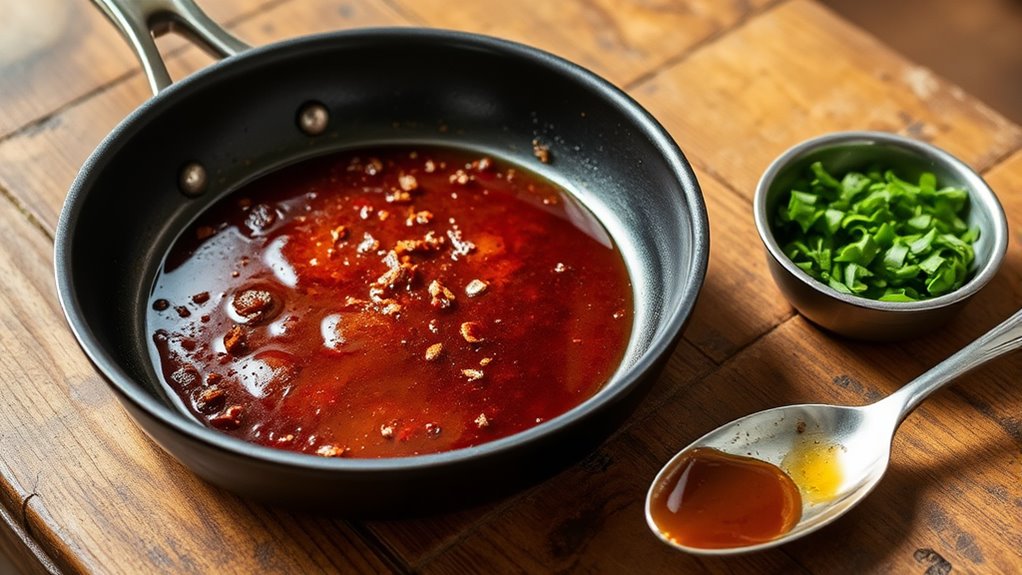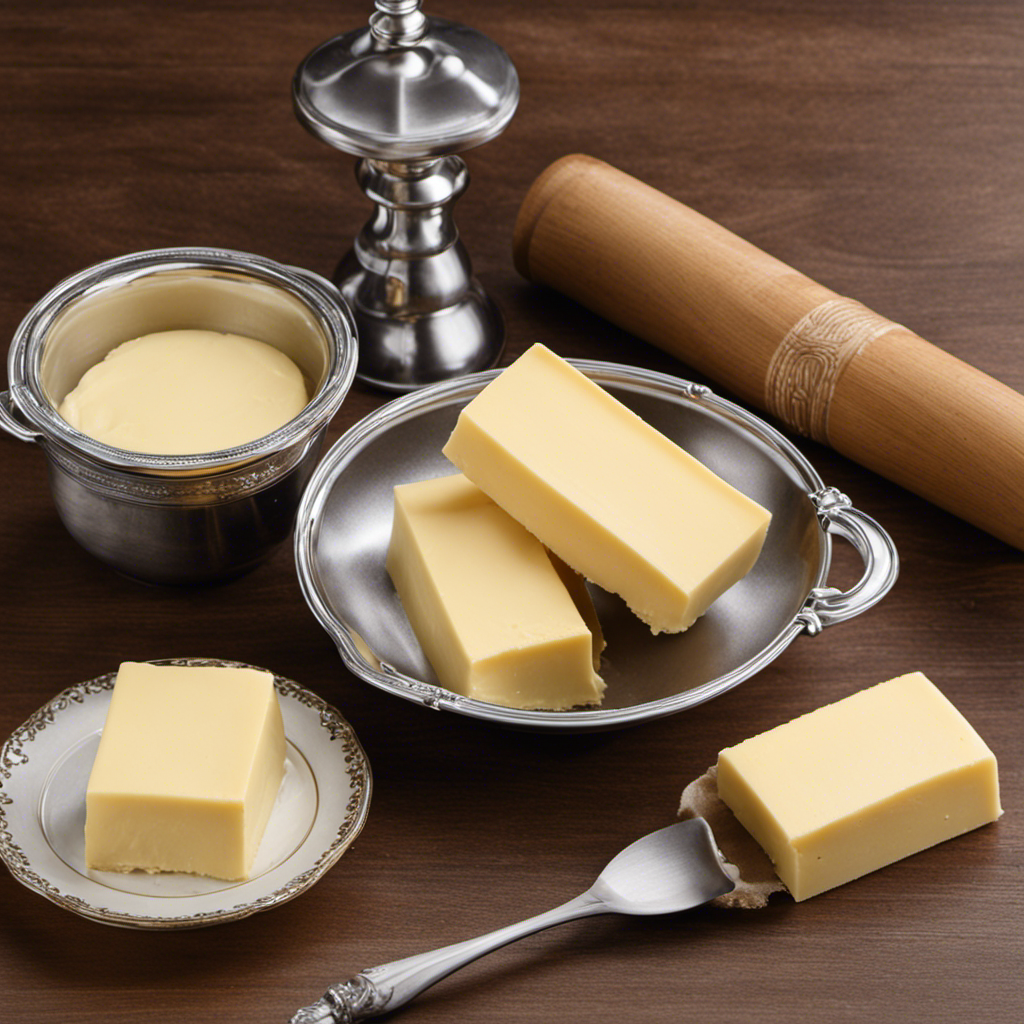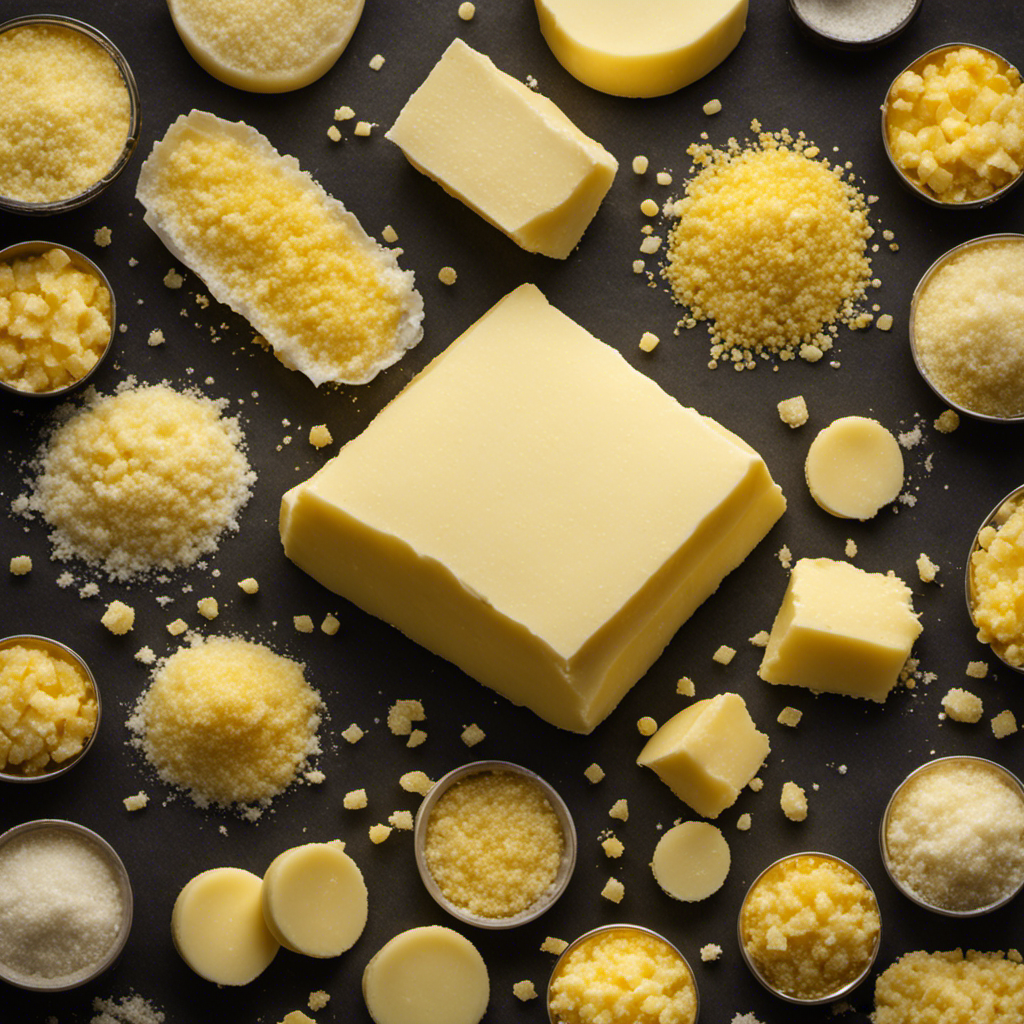Before revisiting pan sauce basics, focus on mastering ingredient substitutions and flavor balancing. Learn how to replace ingredients like wine or cream with alternatives such as apple cider vinegar or coconut milk, while maintaining the right acidity, sweetness, and richness. Taste frequently and adjust seasonings to keep flavors harmonious. Understanding how substitutions impact taste guarantees your sauces are well-rounded and enhance your dishes. Stay curious — exploring these fundamentals will prepare you for more advanced sauce techniques ahead.
Key Takeaways
- Taste your sauce frequently to identify necessary adjustments for balanced acidity, sweetness, and saltiness.
- Use small amounts of broth, water, or vinegar to modify thickness and flavor without overpowering.
- Incorporate a splash of soy sauce, miso, or honey to deepen flavor and soften acidity.
- Adjust seasonings gradually, tasting each time to ensure harmony with the main dish.
- Remember that ingredient substitutions can alter flavor; tweak seasonings accordingly for optimal results.
Mastering Ingredient Substitutions and Flavor Balance

Touching pan sauce is a simple yet powerful technique that enhances the flavor of your dishes. It allows you to transform basic ingredients into a rich, complex sauce that ties everything together on the plate. Before diving back into making pan sauces, it’s essential to understand how ingredient substitutions can impact flavor balancing. Sometimes, you don’t have all the ingredients called for in a recipe, or you want to tweak the flavor profile to suit your palate. Knowing how to substitute ingredients properly ensures your sauce remains balanced and flavorful, even when you need to improvise.
When substituting ingredients, focus on maintaining the balance of acidity, sweetness, saltiness, and richness. For example, if a recipe calls for wine but you don’t have any, a splash of apple cider vinegar mixed with water can mimic the acidity, while adding a touch of honey can replace sweetness. Similarly, if a recipe calls for cream and you’re out, full-fat coconut milk can be a suitable alternative, bringing both richness and creaminess. Just remember that each substitution can alter the overall flavor, so adjust seasonings accordingly to keep the sauce harmonious.
Flavor balancing is key to a successful pan sauce. Once you’ve deglazed the pan with wine or vinegar, taste the sauce and decide what it needs more of—be it salt, acidity, sweetness, or umami. Adding a bit of sugar or honey can round out sharp acidity, while soy sauce or miso paste introduces savory depth. If your sauce feels too thick or concentrated, a little broth or water can loosen it up without diluting the flavor too much. Keep tasting as you go; this habit helps you achieve the perfect equilibrium.
Taste and adjust your pan sauce frequently for perfect flavor balance and harmony.
Another tip is to contemplate the ingredients’ inherent flavors. For instance, if you’re using a strongly flavored stock, you might want to cut back on salt or add a splash of lemon juice to brighten the sauce. Conversely, if your sauce lacks depth, finishing it with a dollop of butter or a splash of soy sauce can add richness and complexity. The goal is to create a sauce that complements your main ingredient without overpowering it. Understanding the benefits of raw food can also inspire fresh, wholesome ingredients to elevate your sauces.
Frequently Asked Questions
What Are Common Mistakes to Avoid When Making Pan Sauces?
To avoid pan sauce pitfalls, don’t rush the process or add ingredients without tasting first. Be careful with flavor balancing—too much salt or acidity can overpower the sauce. Avoid scraping the pan too aggressively, which can burn flavors. Also, don’t forget to deglaze properly to capture all those flavorful bits. Keep your heat moderate, stir consistently, and taste frequently to create a well-rounded, delicious pan sauce every time.
How Can I Store Leftover Pan Sauce Safely?
You can store leftover pan sauce safely by transferring it into airtight storage containers. Make sure to let the sauce cool slightly before sealing. For longer storage, use freezing methods like ice cube trays or freezer bags to portion out the sauce. Label the containers with the date, so you know how long it’s been in the freezer. This keeps your sauce fresh and ready for future use.
Can Pan Sauces Be Made Vegan or Vegetarian?
Making pan sauces vegan or vegetarian is like transforming a familiar melody into a new tune. You can swap butter for plant-based margarine or oils, and use vegan substitutes like coconut cream or nut-based milks for richness. Vegetarian options include mushroom broth or vegetable stock. These adjustments let you enjoy flavorful sauces without animal products, ensuring everyone can savor the dish while keeping it plant-based and delicious.
What Are Quick Tips for Thickening Pan Sauces?
To thicken your pan sauce quickly, use simple thickening agents like cornstarch or flour mixed with cold water to create a slurry. Add the slurry gradually, stirring constantly until you reach your desired sauce consistency. Alternatively, simmer the sauce to reduce and concentrate flavors. Keep an eye on the sauce as you thicken, and adjust with more thickening agents if needed to achieve the perfect texture.
How Do I Adjust Pan Sauces for Different Protein Types?
Did you know that pairing the right protein can boost your sauce’s flavor by up to 30%? To adjust pan sauces for different proteins, consider their texture and flavor profile. For chicken, add herbs like thyme; for beef, boost richness with red wine. For fish, keep it light with lemon or capers. Tailoring your flavor adjustments guarantees each sauce complements its protein perfectly.
Conclusion
Now that you’re grounding yourself in the dance of ingredient swaps and flavor harmony, remember, each tweak is like tuning an instrument—finding that perfect pitch. Don’t rush the melody; let your palate play its tune. With patience and practice, your pan sauces will sing with confidence, weaving a symphony of tastes that’s uniquely yours. Keep experimenting, stay curious, and let your culinary rhythm guide you to delicious new heights.









